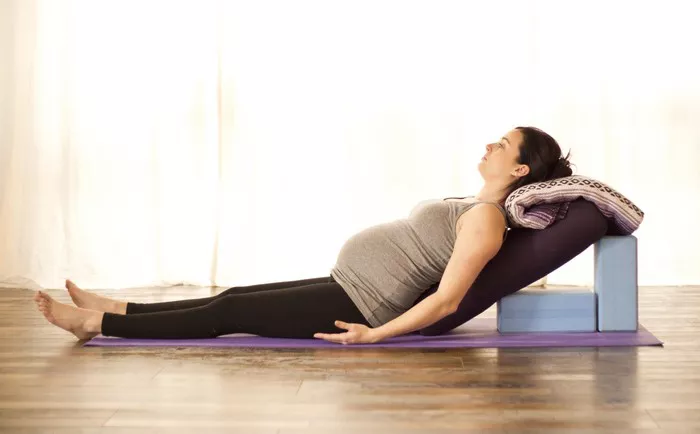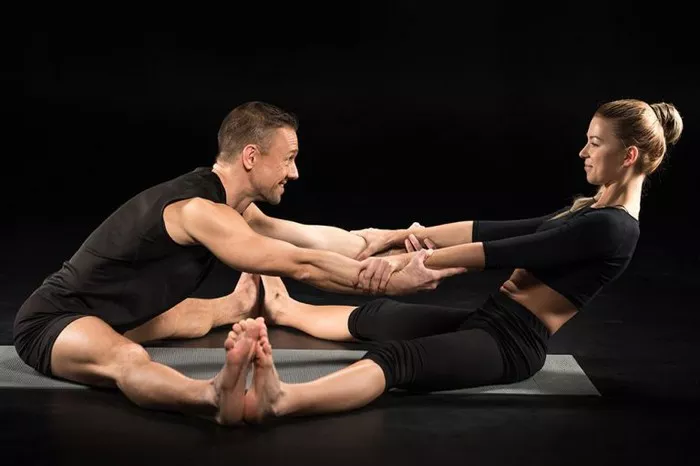Yoga is a beautiful and diverse practice that offers a multitude of physical and mental benefits. One of the most common questions among both beginners and experienced yogis is how long to hold each yoga pose. The answer, however, is not one-size-fits-all. It depends on various factors such as the type of pose, your level of experience, your goals, and the overall flow of your practice. In this comprehensive article, we will explore the different aspects that influence the holding time of yoga poses and provide guidelines to help you optimize your practice.
Factors Affecting Pose Duration
Type of Pose
Standing Poses: Standing poses like Warrior I and II are generally held for about 30 seconds to 1 minute. These poses build strength and stability in the legs, hips, and core. Holding them for this duration allows you to engage the muscles deeply and feel the stretch and activation. For example, in Warrior II, you can focus on grounding through the feet, opening the hips, and reaching the arms out, all of which require time to fully experience and execute properly.
Seated and Forward Folds: Seated poses such as Paschimottanasana (Seated Forward Fold) are often held for 1 to 3 minutes. This longer duration is beneficial as it gives the hamstrings and back muscles time to gradually release and lengthen. The slow and sustained stretch helps to increase flexibility and relieve tension in these areas. You can use this time to focus on your breath and let go of any tightness with each exhale.
Inversions: Inversions like Headstand (Sirsasana) and Shoulderstand (Sarvangasana) are more advanced and should be held with caution. Beginners may start with just a few seconds and gradually work up to 30 seconds to 1 minute over time. These poses require a significant amount of strength and balance, and holding them for too long too soon can increase the risk of injury. The focus in inversions is not only on the physical aspect but also on maintaining a steady breath and a calm mind.
Restorative Poses: Restorative poses such as Savasana (Corpse Pose) and supported backbends are held for longer periods, typically 5 to 10 minutes. These poses are designed to deeply relax the body and mind, allowing for a complete release of tension. In Savasana, for instance, you can fully surrender and let the body and mind rejuvenate, which is essential for overall well-being and stress reduction.
Experience Level
Beginners: For those new to yoga, it’s important to start with shorter hold times to build strength, flexibility, and body awareness. Holding poses for around 15 to 30 seconds is a good starting point. This allows you to get a feel for the pose without overexerting or straining your body. As you become more comfortable and confident, you can gradually increase the duration. For example, in a simple Downward-Facing Dog, a beginner might start with 15 seconds and then work up to 30 seconds as their arms and shoulders get stronger.
Intermediate and Advanced Practitioners: Intermediate and advanced yogis can hold poses for longer periods, typically 30 seconds to 3 minutes or more, depending on the pose. They have developed the necessary strength and flexibility to maintain the poses safely and can use the longer hold times to deepen their practice. In a challenging arm balance like Crow Pose, an advanced practitioner might hold the pose for 30 seconds to a minute, focusing on perfecting the alignment and engaging the core and upper body muscles.
Goals of the Practice
Strength Building: If your goal is to build strength, you’ll want to hold poses that target specific muscle groups for longer periods. For example, in plank pose, holding for 30 seconds to 1 minute can effectively engage the core, arms, and shoulders, helping to build strength and stability. You can also increase the intensity by adding variations or holding the pose for multiple sets.
Flexibility Improvement: For flexibility, longer holds in stretches are key. Poses like the Butterfly Pose can be held for 2 to 3 minutes on each side to gradually open the hips and increase the range of motion. You can use props such as blocks or bolsters to support the body and make the stretch more comfortable and effective.
Stress Reduction and Relaxation: In a practice focused on stress reduction, restorative and gentle poses with longer hold times are ideal. As mentioned earlier, Savasana and other relaxation poses held for 5 to 10 minutes can help calm the nervous system and promote a sense of peace and well-being. You can also incorporate slow, deep breathing throughout the practice to enhance the relaxation effect.
The Importance of Breath in Determining Pose Duration
The breath is an essential aspect of yoga and can guide the length of time you hold a pose. In general, you should aim to synchronize your breath with the pose. For example, in a standing pose like Mountain Pose (Tadasana), you can take a few deep breaths to center yourself and then hold the pose for as long as you can maintain a steady, even breath. If you start to feel out of breath or your breath becomes shallow and strained, it may be a sign that you’ve held the pose for too long or that your alignment needs adjustment.
In more dynamic practices such as Vinyasa Flow, the breath also dictates the pace of moving in and out of poses. The inhalation and exhalation are coordinated with the transitions, and the hold times of the poses are often shorter to maintain the flow and keep the body warm and energized. This type of practice can be invigorating and is great for building strength and cardiovascular health.
Adjusting Pose Duration in a Yoga Sequence
In a well-designed yoga sequence, the hold times of the poses are carefully planned to create a balanced and harmonious flow. The sequence usually starts with warm-up poses held for shorter durations to prepare the body for more challenging postures. As the practice progresses, the hold times may increase for poses that require more focus and effort.
For example, in a typical Hatha yoga class, you might begin with a few rounds of Sun Salutations, where each pose is held for a brief moment to get the blood flowing and warm up the muscles. Then, you would move on to standing poses held for 30 seconds to 1 minute, followed by seated and forward fold poses held for 1 to 3 minutes. Towards the end of the class, you would transition into restorative poses with longer hold times to cool down and relax.
It’s important to listen to your body during the sequence and make adjustments as needed. If you’re feeling fatigued or overly challenged, you can shorten the hold times or take a break. On the other hand, if you’re feeling strong and energized, you may choose to hold the poses a bit longer or add a variation to deepen the stretch or engagement.
Common Mistakes and How to Avoid Them
Overholding Poses
One of the most common mistakes is overholding poses, especially for beginners. This can lead to muscle fatigue, strain, and even injury. To avoid this, start with shorter hold times and gradually increase as your body becomes stronger and more flexible. Pay attention to your body’s signals and don’t push beyond your limits. If you feel pain or discomfort, come out of the pose immediately.
Underholding Poses
On the other hand, underholding poses may not allow you to fully experience the benefits of the posture. If you’re constantly moving from one pose to another without taking the time to engage and stretch, you may not see the desired improvements in strength, flexibility, or relaxation. Make sure to hold each pose long enough to feel the intended effect, but again, be mindful of your body’s capabilities.
Ignoring the Breath
As mentioned earlier, ignoring the breath is a mistake that can disrupt the flow and effectiveness of your practice. Always strive to maintain a steady, even breath throughout each pose. If you find yourself holding your breath, it’s a sign that you need to either adjust the pose or come out of it and take a few deep breaths to reset.
Conclusion
Determining how long to hold each yoga pose is a personal and dynamic process that takes into account various factors such as the type of pose, your experience level, and your practice goals. By understanding these factors and listening to your body, you can optimize your yoga practice to achieve the maximum physical and mental benefits. Whether you’re looking to build strength, increase flexibility, reduce stress, or simply enjoy the beauty of the practice, finding the right balance in pose duration is key. So, the next time you roll out your mat, take a moment to consider these guidelines and embark on a yoga journey that is both safe and fulfilling. Remember, yoga is not about perfection but about progress and self-discovery, and the right hold times for each pose will evolve as you grow in your practice.
Related topics


























